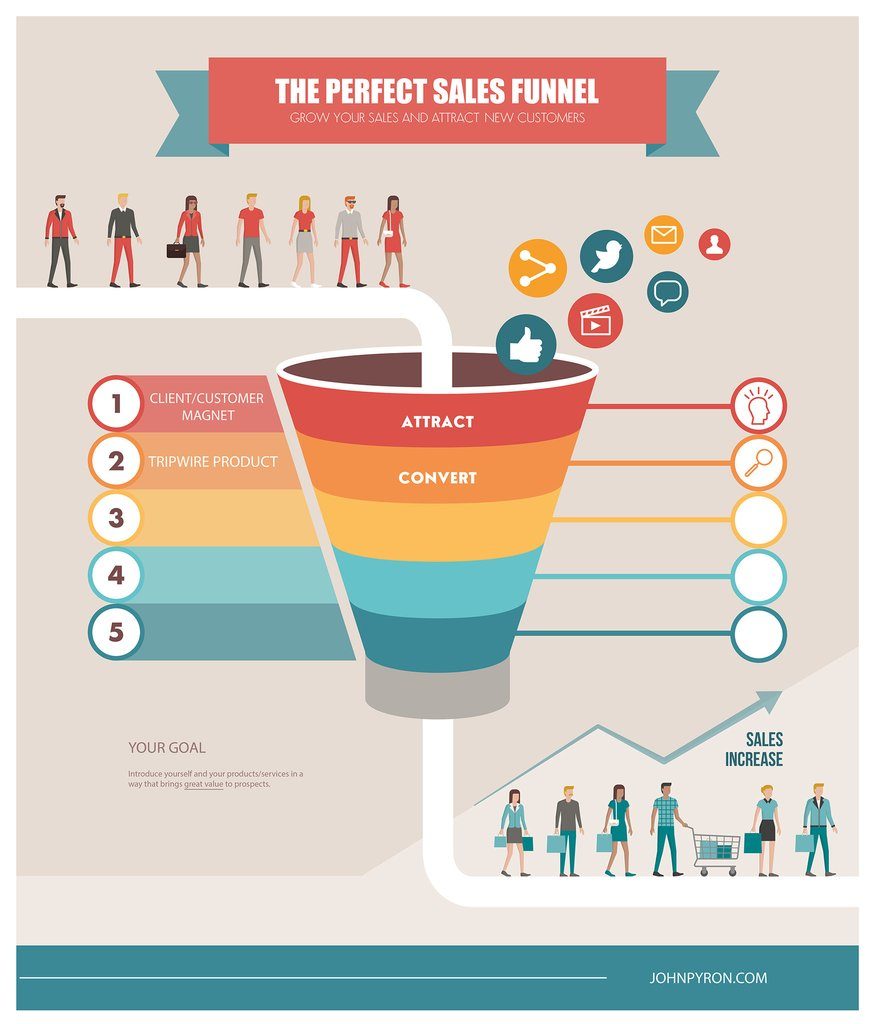My last post discussed the first two steps in the perfect sales funnel. These two steps will probably require the most energy and prep work, but the next few steps are where the real magic happens. It’s important that you look at the process holistically and apply your best business behavior to each. So, let’s move on to the next steps!
Remember, this is what our funnel looks like so far…

Step 3: Core Offer
Step 3 is where you will introduce your flagship product/service. This is the item or “thing” you are most known for or proud of.
Rule: Should be $100 – $1,000.
Homework: Think about what you do. What do people pay you the most for today? Tangible or intangible products? Most people will drop more money for knowledge than they will for tangible products, so it’s possible you could create a flagship product around your knowledge (if you don’t already have one.) This could be 1-on-1 coaching, training programs, membership sites, or more.
Tip: NEVER discount your coaching or 1-on-1 time to get more leads. You can discount these services for qualified leads in certain circumstances, but you want to use steps 1 and 2 in your funnel to weed out the prospects who are not a right fit first.
Step 4: Profit Optimizer
Now, we are getting into the growth portion of the funnel. Your product optimizer is designed for customers and clients who dive deep into your business topic.
Rule: Should be $1,000 – $10,000 and treated as a VIP service. If you don’t have your own offer in this category (yet), consider this an opportunity to refer your clients/customers to an affiliate who does. Sometimes, that is more time and cost-effective.
Homework: Think of one of your or someone else’s products/programs you can offer as a profit optimizer to wow your top clients/customers.
Step 5: Retention
Retention is all about keeping the current clients/customers and is far easier than attracting new clients/customers. Happy customers pay much more over the long term, and leads to step 6 in the funnel: referrals.
Homework: Each month, pick a client/customer, and reach out to them to find out the struggles they are dealing with or goals they have for the year/quarter. Then, find 3-6 other vendors who can help them (whether you get anything for the referral or not.) The entire focus should be helping your client in any way you can.
Step 6: Referral
This is the final portion of the funnel – and a truly magical one. Referrals will come from happy clients/customers but can also come from other vendors and affiliates you have in your network, so be sure to keep that network varied.
Homework: Sit and look at the clients you have and ask them who their other vendors are—accountants, attorneys, dry cleaners, etc. Set up a referral incentive program for them to refer your products/services to their vendors and clients. You can also set up an affiliate program for anyone to enroll in on your website. Usually, referral partners will get 15 – 25% of whatever you earn from the people they refer you to, which is a win-win!
Now, your funnel is up and running and should look something like this:

Well-crafted sales funnels are the lifeblood of any business. If you haven’t created your own, I hope this two-part article has helped you get the ball rolling!
I am excited to discuss your goals and challenges to fast-track your success. Book time on my calendar today. You can call me at (916) 765-2596 or email me at jpyron@johnpyron.com. Make it a great day!




